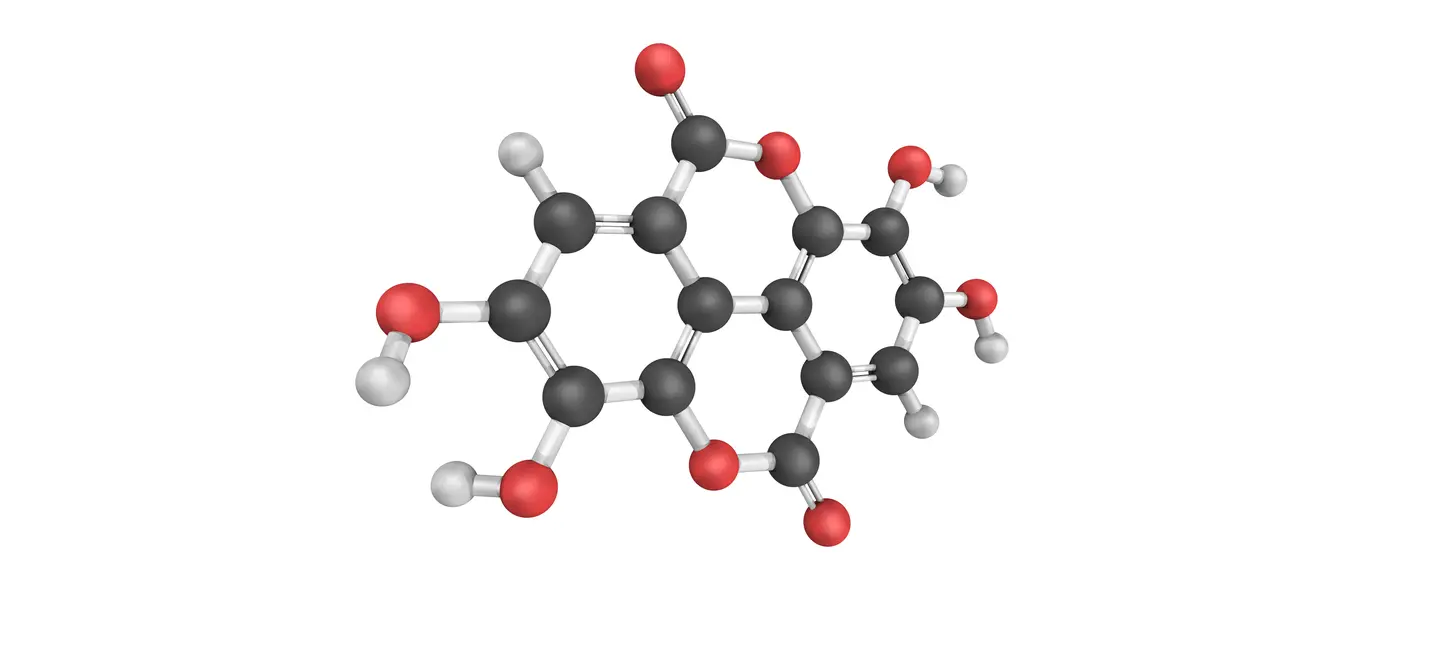
Ellagic acid is a naturally occurring substance. The best sources of ellagic acid in the diet are strawberries, raspberries, blackberries, cherries, and walnuts.
Ellagic acid is used for cancer, dark skin patches on the face (melasma), memory and thinking skills (cognitive function), diabetes, and many other purposes, but there is no good scientific evidence to support these uses.
Is It Effective?
There is interest in using ellagic acid for a number of purposes, but there isn't enough reliable information to say whether it might be helpful.
Is it Safe?
Ellagic acid may bind to chemicals that cause cancer. It may also prevent the growth of cancer cells and improve the safety and efficacy of some cancer drugs. However, ellagic acid is poorly absorbed and is also eliminated quickly from the body. These characteristics may limit its usefulness as a medicine.
When taken by mouth: Ellagic acid is POSSIBLY SAFE when taken appropriately for up to 3 months. There isn't enough reliable information to know if ellagic acid is safe or what the side effects might be when used long-term.
When applied to the skin: Ellagic acid is POSSIBLY SAFE when used for up to 6 months. There isn't enough reliable information to know if ellagic acid is safe or what the side effects might be when used long-term.
Special Precautions & Warnings:
Pregnancy and breast-feeding: There isn't enough reliable information to know if ellagic acid is safe to use when pregnant or breast-feeding. Stay on the safe side and avoid use.
Medications for diabetes (Antidiabetes drugs)
Interaction Rating=Moderate Be cautious with this combination.
Ellagic acid might lower blood sugar levels. Taking ellagic acid along with diabetes medications might cause blood sugar to drop too low. Monitor your blood sugar closely.
Herbs and supplements that might lower blood sugar: Ellagic acid might lower blood sugar. Taking it with other supplements with similar effects might lower blood sugar too much. Examples of supplements with this effect include aloe, bitter melon, cassia cinnamon, chromium, and prickly pear cactus.
There are no known interactions with foods.
The appropriate dose of ellagic acid depends on several factors such as the user's age, health, and several other conditions. At this time there is not enough scientific information to determine an appropriate range of doses for ellagic acid. Keep in mind that natural products are not always necessarily safe and dosages can be important. Be sure to follow relevant directions on product labels and consult your pharmacist or physician or other healthcare professional before using.
3,4,3',4'-hydroxyl-benzopyranol[5,4,3-c,d,e][1]benzopyrn-6-6'-dione, Acide Ellagique, Ácido Elágico, Gallogen.
Information on this website is for informational use only and is not intended to replace professional medical advice, diagnosis, or treatment. While evidence-based, it is not guaranteed to be error-free and is not intended to meet any particular user’s needs or requirements or to cover all possible uses, safety concerns, interactions, outcomes, or adverse effects. Always check with your doctor or other medical professional before making healthcare decisions (including taking any medication) and do not delay or disregard seeking medical advice or treatment based on any information displayed on this website.
© TRC Healthcare 2024. All rights reserved. Use and/or distribution is permitted only pursuant to a valid license or other permission from TRC Healthcare.
